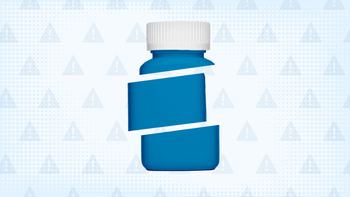
Magnesium for Constipation: How to Choose Which Type Is Best for You
Key takeaways:
In the right amounts, magnesium supplements can help with constipation.
There are different types of magnesium available over the counter. You can find magnesium as a pill, a powder, a liquid, and even as a tea. The dosage can vary depending on which type you take.
While magnesium supplements are generally safe, taking very high doses can lead to side effects. And it can be dangerous for people with kidney problems.
Table of contents

People take magnesium for many different reasons. And this makes sense. It plays a role in more than 300 different bodily functions — from muscle relaxation to maintaining a steady heartbeat.
Magnesium can also have a laxative effect, which means it can be a treatment for constipation. But the type you take matters. And if you have ever looked for magnesium in your local supplement aisle, you know there are many different types and doses to choose from. So we’ll help you know the best type of magnesium for constipation.
Types of magnesium for constipation
Magnesium supplements are easy to find over the counter. But there are many different types, and some are absorbed better than others. Let’s take a look at the different options of magnesium for constipation.
Search and compare options
Magnesium oxide
Magnesium oxide comes in the form of a powder or capsule.
Pros:
It’s less expensive than other types of magnesium.
It stays in the gut more than other formulations. This decreases the risk of developing dangerously high levels of magnesium in the blood.
Cons:
Magnesium oxide for constipation can still cause high levels of magnesium in the blood, especially if taken over a long period of time. For this reason, people with abnormal kidney function or kidney disease shouldn’t take it.
Dosage: It typically comes in a 400 mg tablet. For some people, 1 tablet a day is enough to relieve constipation. But many people take it 2 to 3 times a day.
The best drinks for constipation: If you want to avoid taking a supplement or laxative to help with constipation, this list of drinks may help.
Foods that are high in magnesium: Supplements aren’t the only way to get your daily dose of magnesium. Try adding these foods into your daily meals.
The benefits of magnesium: This mineral can help with more than just constipation. Learn about the array of health benefits, as well as some of the risks and side effects.
Magnesium hydroxide
Magnesium hydroxide is the liquid form of magnesium oxide, and is better known by the name Milk of Magnesia. It also comes as a tablet and chewable tablet, though this is less common.
Pros:
It’s easy to find.
Since it’s available in chewable tablet and liquid form, it may be a better option for children or people who don’t swallow pills easily.
Cons:
For some people, the taste is very unpleasant.
Similar to magnesium oxide, there’s a risk of magnesium toxicity.
Dosage: Each 15 mL of liquid contains 1,200 mg of magnesium. For adults and children 12 years and older, the dosage is generally 30 mL to 60 mL each day. This can be divided into two or three doses over the course of the day. The dosage for children 6 to 11 years old is half that amount — 15 mL to 30 mL a day.
Magnesium sulfate
Magnesium sulfate is better known in the U.S. as Epsom salt. Unlike in other countries, it’s not readily available in an oral form. But it can be found in certain mineral waters and can help with constipation.
Pros:
Since some mineral waters naturally contain magnesium sulfate, some people consider it a more natural way to supplement magnesium.
Cons:
It’s more difficult to find in an oral form in the U.S.
Dosage: This depends on the product because it comes in different strengths. But a typical dosage of Epsom salt for constipation is 2 tsp to 4 tsp dissolved in 8 oz of water taken once or twice per day.
Magnesium citrate
Magnesium citrate is another liquid form of magnesium that comes in a bottle.
Pros:
It’s easy to find.
It can be mixed with other liquids (like juice) to make it taste better. Some people say it tastes like carbonated soda.
Cons:
Taking magnesium citrate for constipation can require drinking a large volume of liquid. So even if it tastes better than other forms, it can still be hard to get down.
Dosage: The dosage for this form varies by age:
For adults and children older than 12 years, the recommended dosage is 6.5 oz to 10 oz each day. This can be taken all at once or divided throughout the day.
For children between 6 and 11 years old, the dosage ranges from 3 oz to 7 oz a day.
For children between 2 and 5 years old, the recommended dosage is 2 oz to 3 oz a day.
Magnesium glycinate
Magnesium glycinate is the combination of magnesium with an amino acid, called glycine. Unlike some of the other forms of magnesium above, this is more easily absorbed from the gut into the bloodstream. This means it’s more commonly used when someone has low levels of magnesium.
Pros:
Since it’s better absorbed into the blood stream, this type of magnesium may also be better for helping with sleep and anxiety.
It has less gastrointestinal side effects.
Cons:
This formulation may be less effective if you’re taking it as a laxative.
It can lead to high levels of magnesium in the blood, which can potentially be dangerous.
Dosage: Magnesium glycinate typically comes in 100 mg to 400 mg capsules. Often people start with 100 mg but can work up to 400 mg a day.
Which magnesium is best for constipation?
There isn’t necessarily one type of magnesium that works better for constipation than others. People will have different preferences based on:
Cost and availability at their local pharmacy
The taste and form — some people may prefer a pill, while others may prefer a liquid
The way it affects their body — you may find one form works better for you than others, or causes fewer side effects
You can experiment with different forms, but if you’re wondering where to start, here are some pointers:
For adults, the easiest supplement to take for constipation is usually magnesium oxide in a pill form.
For children, the liquid formulations of magnesium hydroxide or magnesium citrate may be easier to swallow.
For smaller kids who may not drink a lot, magnesium hydroxide will likely be the best choice.
What are the side effects of taking magnesium for constipation?
In general, magnesium at recommended amounts is safe. However, if you take too much, you may experience:
Diarrhea
Nausea or vomiting
Abdominal pain
Flushing
In severe cases, it can cause breathing to slow, and the heart to beat irregularly. And there are some health conditions that increase the risk of health complications from magnesium supplements.
Who should avoid taking magnesium for constipation?
People shouldn’t take magnesium if they have the following conditions:
Kidney disease: The kidneys play an important role in filtering excess magnesium out of the blood. So if someone has reduced kidney function, they’re at greater risk of dangerously high magnesium levels.
Myasthenia gravis: Magnesium relaxes muscles. And this can be dangerous for people who have conditions that affect how their nerves control muscle contraction, such as myasthenia gravis. Extra magnesium in the body may cause them to become very weak.
It’s also important to know that magnesium can interfere with how other medications work. These include:
Insulin
Antibiotics and antivirals
Heart medications, like digoxin
Diuretics, like hydrochlorothiazide and furosemide
Reflux medications, like omeprazole
If you take any of these medications, talk with a healthcare professional or pharmacist before taking any magnesium.
Frequently asked questions
When you take magnesium, much of the mineral stays in the gut. This draws water into the bowels, which helps keep things moving. This is sometimes called an “osmotic effect,” and it’s why magnesium can be an effective laxative.
For most people, magnesium starts working when it reaches the bowel. You may see results as soon as 30 minutes, but it may take up to 6 hours. In cases of severe constipation, it may take longer.
The best time to take magnesium depends on the type you take, and how your body responds to it. Many people prefer to take it at night so that they’ll have a bowel movement in the morning. And if you’re taking magnesium glycinate, this makes sense given it can help with sleep and relaxation.
But it’s possible that magnesium for constipation can kick in quickly. So in order to prevent waking up in the middle of the night with the need to poop, it may make sense to take it earlier in the day. Like any laxative, take it at a time where you know you can be home and comfortable for several hours afterward. Especially if you are still learning how your body responds to it.
It’s safe for most people to take magnesium daily. It’s not safe for people who are at risk for high magnesium levels in the blood. Don’t take magnesium every day if you have any history of kidney problems or kidney disease. You should also take precautions if you take any medication that could affect your kidneys or electrolyte levels. Common examples include ACE inhibitors, diuretics, or daily nonsteroidal anti-inflammatory drugs (NSAIDs).
Even if you have normal kidney function, it’s important to stick to the recommended dosage of any type of magnesium you take. And don’t take magnesium daily for constipation if it starts to cause excessive bowel movements or diarrhea. This could lead to dehydration or electrolyte problems.
Magnesium typically doesn’t cause constipation. If you’re having trouble with constipation and a magnesium supplement isn’t helping, it may be worth talking with your primary care provider.
The bottom line
Magnesium can be an effective way to treat constipation. And many people prefer it to other laxatives. In the recommended dosages, it’s generally safe with few side effects.
But it’s possible to take too much. This can result in adverse effects, and in more severe cases, dangerously high levels of magnesium in the blood. People with any history of kidney disease should avoid using magnesium to treat constipation. If you’re unsure, ask a healthcare professional or pharmacist if it’s safe for you.
Why trust our experts?


References
Allen, M. J., et al. (2023). Magnesium. StatPearls.
Dupont, C., et al. (2020). Magnesium sulfate-rich natural mineral waters in the treatment of functional constipation — A review. Nutrients.
Gröber, U. (2019). Magnesium and drugs. International Journal of Molecular Sciences.
Guerrera, M. P., et al. (2009). Therapeutic uses of magnesium. American Family Physician.
Hicks, M. A., et al. (2023). Magnesium sulfate. StatPearls.
MedlinePlus. (2019). Magnesium citrate.
MedlinePlus. (2019). Magnesium hydroxide.
Mori, H., et al. (2021). Magnesium oxide in constipation. Nutrients.
PubChem. (2025). Magnesium glycinate. National Library of Medicine.

























